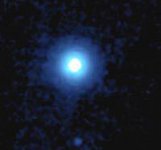Milky Way filled with 50 billion planets
 NASA's Kepler telescope has already identified thousands of planets and scientists believe that points to our galaxy being home to 50billion of them.
NASA's Kepler telescope has already identified thousands of planets and scientists believe that points to our galaxy being home to 50billion of them.
Of those, around one in 100 is ‘not too hot, not too cold' for life. So far Kepler has found 1,235 planets, with 54 in the so-called Goldilocks zone.
Kepler science chief William Borucki said scientists took the number of planets they found in the first year of searching a small part of the night sky and then estimated that half of all stars have them, Metro reports.
The 50bn number is calculated by figuring that 50% of stars have planets. Of that 50%, 1-in-200 has planets that fit in the "Goldilocks zone." These numbers hover at the low end of the spectrum since it's assumed that many of these stars have multiple planets.
It's important to remember that these numbers are estimates. The hard numbers are much less impressive: 1,235 candidate planets with 54 falling in the "Goldilocks zone," Gearfuse reports.
Subscribe to Pravda.Ru Telegram channel, Facebook, RSS!




